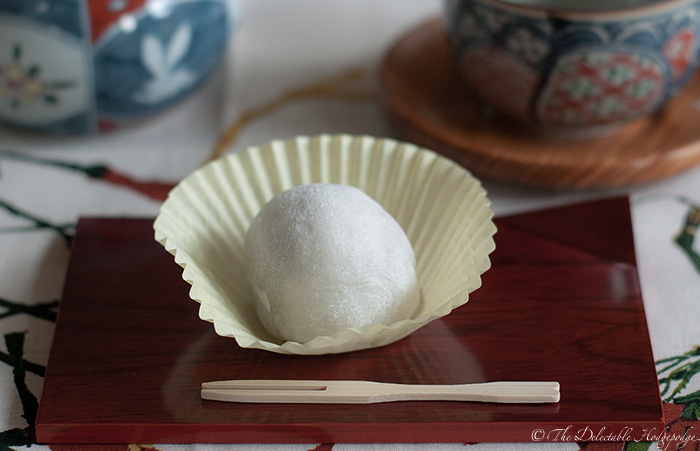
Yumi’s Delicately Delicious Daifuku
| Ingredient | 10 Daifuku | 10 Daifuku |
|---|---|---|
| Outer Wrap | ||
| gyūhi | 1 batch | 1 batch |
| potato or corn starch | to dust | to dust |
| Filling | ||
| koshian | 10 oz. | 300g |
These delicate Japanese delights consist of a soft-as-a-cloud layer of chewy gyūhi wrapped around a nugget of smooth, sweet bean paste. With a tongue-caressing texture and reserved sweetness, these are a quintessentially Japanese treat.
After receiving a beautiful plate of her homemade daifuku, we asked our friend Yumi for her recipe so we could share.
Preparation
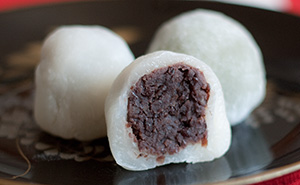
- Prepare a batch of azuki bean paste for the filling; freeze any you don’t end up using.
- Prepare the ingredients for a batch of gyūhi, but don’t start mixing them yet.
Directions
- Make balls of anko.
Divide the anko into ten balls, each about 2.5 cm (1 inch) in diameter. To divide the anko easily, you can roll it into a cylinder, then cut it into ten pieces and roll them into balls. If it’s too sticky to work with, lay the balls out on a baking sheet for a while until they dry out a little.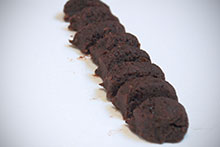
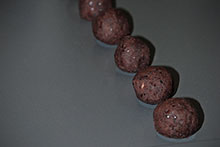
- Make gyūhi.
Follow the recipe and prepare a batch of gyūhi. - Make gyūhi disks to wrap the anko.
Liberally dust a cutting board or plate with potato (or corn) starch, and drop the gyūhi dough onto it. Cut the dough into ten equal chunks. Coat your hands with starch so it doesn’t stick, then flatten the dough with your fingers into small disks. The center of the disks should be thicker than the edges, since it will stretch. - Wrap anko balls.
Lay each gyūhi disk in your palm, put an anko ball in the middle, and stretch the gyūhi around it, pinching the bottom to seal. The finished daifuku should be about the size of a ping-pong ball.
Notes
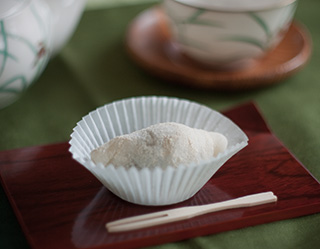
- The finished daifuku are supposed to end up with a layer of starch on the outside; this keeps them from sticking to fingers and plates.
- If you can find sweet rice flour (shiratamako) with mugwort (yomogi) in it, you can make yomogi daifuku; they have a green tint and slightly stronger flavor. To finish these, dust with kinako (soybean flour).
- The smoother texture of koshian goes well with the smooth outer layer of daifuku, but if you prefer you could also use tsubuan.
- By changing the shape of the wrapping into a pointed football-shape and dusting with ao-kinako (green soy flour), you get uguisu mochi, shown at right.
- Yet another variation is to add a salted cherry blossom flower to the top, giving both a decorative touch and distinctive flavor.

